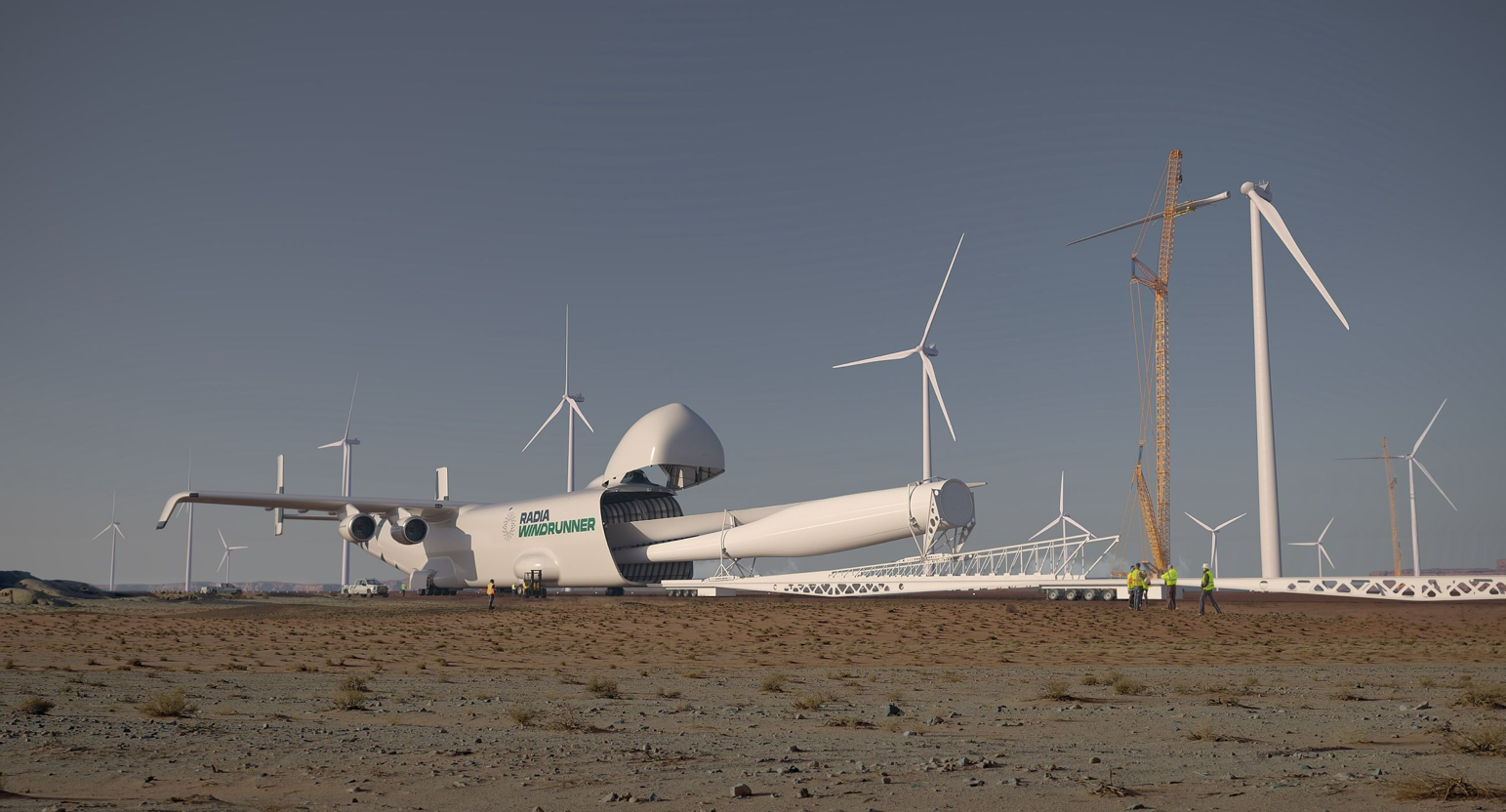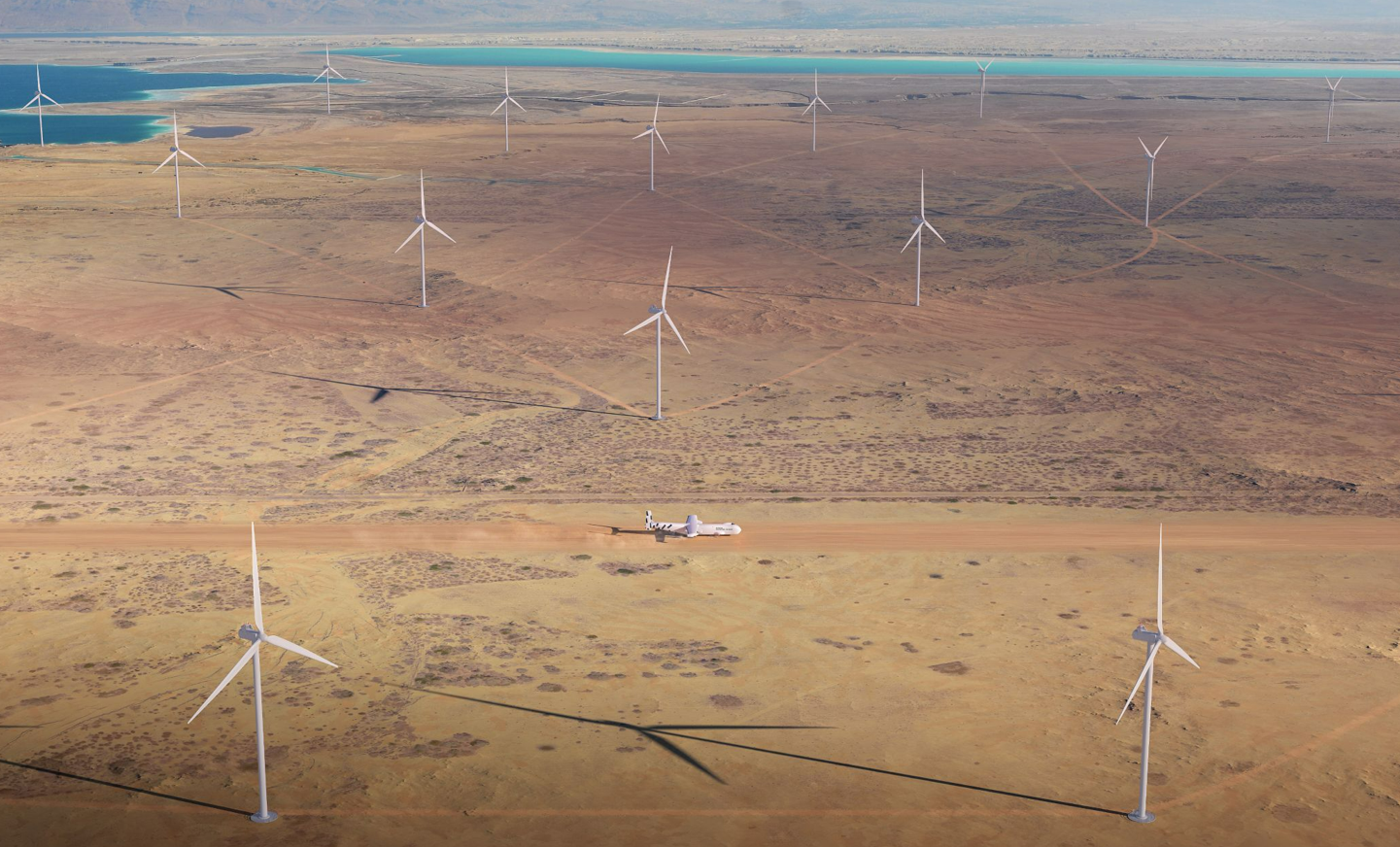The biggest aircraft ever built lies in ruin, but a new contender is gathering momentum.
WindRunner is a supersized aircraft that’s currently under development by the Colorado-based company Radia. Flaunting its design on their website, the startup explains that the plane will boast an 80-meter (262-foot) wingspan and measure 108 meters (354 feet) from tip to tail.
Most importantly, it’s able to carry 12 times more cargo volume than a typical Boeing 747 commercial aircraft. All that space isn’t for extra leg room and suitcases – it’s able to carry this much cargo for a very specific reason: wind turbines.
Wind turbine blades are incredibly difficult to transport from factories to their final location, which is typically in far-flung regions. Even road transport by truck can be troublesome, as the long, bulky blades are hard to maneuver around tight corners and through areas with low tunnels or bridges.
WindRunner is being designed specifically with this in mind. The nose of the plane can flip up, allowing wind turbine blades of over 100 meters (328 feet) in length to be shuffled into the cargo hold. Another key feature of the plane’s design is its ability to able to land on very short, unpaved landing strips that are likely to be found in the remote regions where wind farms are being set up.
With these capabilities, Radia aims to ride the growing global demand for carbon-free electricity and accelerate the expansion of the wind energy market.
“Radia will create a step-function improvement for onshore wind in profitability, lower cost, and higher consistency. This will result in more wind projects, more green fuel projects, lower energy price, more profits, and more money being invested in the energy transition,” Mark Lundstrom, Radia Founder and CEO, said in a statement released last year.

WindRunner could theoretically transport wind turbine blades measuring over 100 meters (328 feet).
Image credit: Radia
While WindRunner was initially conceived to serve the renewable energy sector, its extraordinary capabilities have caught the attention of others. Earlier this month, Radia announced a Cooperative Research and Development Agreement (CRADA) with the US Department of Defense that will look into how their flagship plan could be used to transport “critical military-unique cargo”.
“The WindRunner allows the world’s biggest things to be delivered to the hardest-to-reach locations. This collaboration demonstrates how commercial capabilities may help to support U.S. national defense by integrating with and addressing military needs,” Lundstrom said in a recent statement.
“By leveraging the unique design and capabilities of the WindRunner, we can together explore innovative solutions for transporting outsized and high-volume cargo, enhancing the DoD’s ability to respond to global challenges,” explained Lundstrom.
The US military does have some giant aircraft in its arsenal, but most were designed decades ago and are part of a “rapidly degrading” aging fleet. Biggest of all (and among the oldest) is the Lockheed C-5 Galaxy, with a length of 75.3 meters (247 feet), which has been in operation since 1969 and has served in all major conflicts involving the US, including Vietnam, Iraq, Yugoslavia, and Afghanistan.

WindRunner could theoretically land in all kinds of sketchy environments.
Image credit: Radia
WindRunner is yet to be built and reportedly isn’t set to be in production until the end of 2027. But if and when it’s completed, the plane will become the largest aircraft by length ever built.
It will swipe this title from the Antonov An-225 Mriya, a Soviet-era giant with a length of 84 meters (275 feet) and a wingspan of 88.4 meters (290 feet). Unfortunately, Mriya, which means “the dream” in Ukrainian, is no longer among us, since it was destroyed in February 2022 during the Russian invasion of Ukraine amid the Battle of Antonov Airport.
Now, WindRunner is hoping to continue its vision, whether by supporting global logistics like Mriya did in the past or enabling the green energy transition for the world ahead.
Source Link: WindRunner: The World's Largest Aircraft Wants To Turbocharge The Green Transition